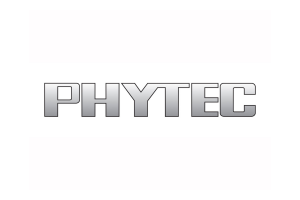Quality rather than quantity
Artificial intelligence gains with embedded systems
There is now hardly any field of application for which the use of artificial intelligence (AI) is not being discussed. Embedded systems are frequently the decisive first link in the processing chain.

Even if the topic of AI is currently receiving a lot of attention, it is in fact not new and can look back on a long history: As early as 1955, the first application for funding was already submitted in the USA. Further headlines and money then came in 1982 with the Japanese initiative “Fifth Generation Computer Systems”. Because no noteworthy successes were delivered, nothing came of the project, and the topic of AI fell into a long sleep for the general public. At the end of 2011, “Siri” was then the wake-up call for the mass market and quite successfully attracted the attention of some competitors. The relevant stock market participants also discovered a “new” (investment) topic and funds flowed into different fields of technology – from the semiconductor device level all the way up to cloud services, a broad range of AI offerings were and are being developed. Popular examples of the use of AI are control systems for autonomous vehicles from cars right through to air taxis.
In these examples, the emphasis is on image processing. This discipline is not new in control technology; all the more surprising is the practically seamless “incorporation” into the overriding topic of AI. The well-known data mining also experienced a similar fate, which is often presented anew as AI for big data. Here, as also with image processing and most other AI applications, it entails pattern recognition. Sometimes the patterns are trained, sometimes the system should discover them – in the latter case, the human being is mostly still required to evaluate the value of what is found.
Siri and other speech recognition services in the consumer goods sector with processing in the cloud have so far attracted a great deal of attention. But what about AI in embedded computers? “Since about a year, I’ve seen the topic coming closer and closer to us. We get a wide variety of inquiries from different markets,” reports Jens Plachetka, Manager Product Business Unit Board Platforms at MSC. “In the discussion, it is clear that there is not always only one technical solution how and where the algorithms are used – sometimes it’s the GPU, sometimes an FPGA. The requirements are simply very diverse.”
Most embedded vendors focus here on the secondary use of GPUs. “AI tasks can easily be outsourced to GPUs. There are also standardized program environments such as CUDA and OpenCL for this,” explains Christian Eder, Director Marketing at congatec. “When you have a CPU with a decent graphics unit, you practically get the functionality for free.”
This is confirmed by Christian Blersch, Managing Director of E.E.P.D.: “With a CPU in the 25W range, you can get very far. Thanks to the powerful integrated GPU of the AMD G-Series, the same performance can be achieved as with an Intel Core-i7. The next step is then the use of high-end graphics cards.” However, customers would probably need a whole year to change their software suites in order to then achieve the performance for AI. Anyone who cannot accept the performance of the integrated GPUs can seamlessly provide a performance boost with dedicated graphics cards – however, not only in terms of computing performance, but also in terms of power consumption.
Aaeon takes a different technical approach: “We have a PCI Express mini card with Intel’s Movidius for ‘AI on the Edge’. Movidius requires very little power and is provided with passive cooling,” reports Karl Margraf, Key Account Manager Central Europe at Aaeon Europe. “The nice thing about it is that several software frameworks already exist – Google’s TensorFlow can be used one-to-one on the hardware.”
Intel defines Movidius as a vision processing unit (VPU) and thus at the same time names one of the most important fields of application: image recognition. This suggests an association with autonomous vehicles. “Object and video recognition are also required in robot control systems,” explains Norbert Hauser, Vice President Marketing at Kontron S&T. “It requires artificial intelligence to coordinate all sequences of movements of collaborative robots. And that has to be in the edge, because you don’t always have connection to the cloud - especially with vehicles. You should therefore be able to let AI decide on site within a certain time interval.”
The AI devices in the edge are typically embedded systems, but with limited functionality. Big data will be made downstream on the next level. “The computers there can only be as good as the data that are collected and pre-processed in the edge,” emphasizes Norbert Hauser. “The quality is decided in the edge – and that is good for us, because in the embedded sector our systems are typically the edge. There are criteria here such as real-time and reliability requirements as well as a harsh environment, in other words, typical criteria for an embedded system. The deployment could be in vehicles, or in robots or machines in factories.

- Artificial intelligence gains with embedded systems
- There is room for everyone...
- NNEF 1.0










